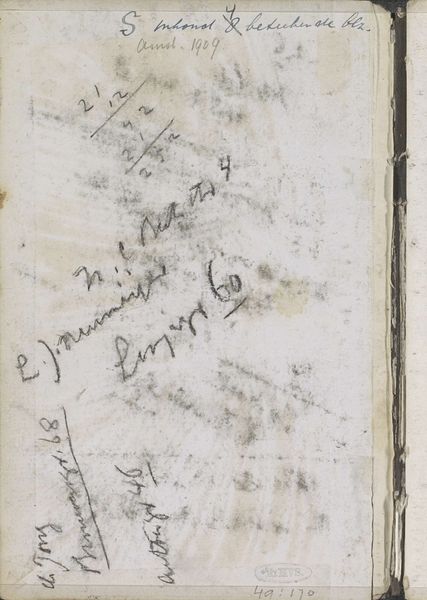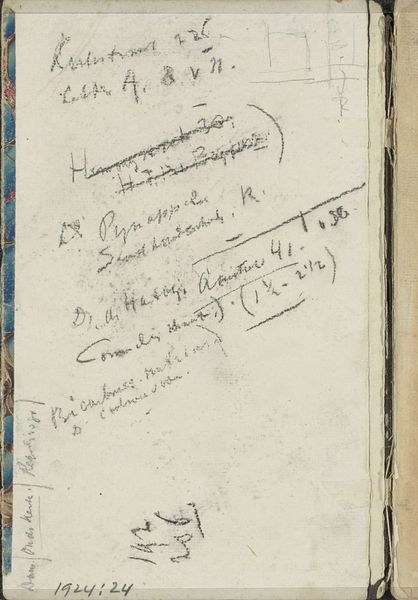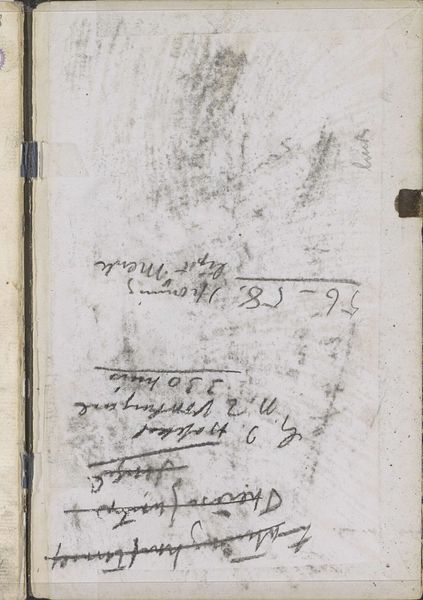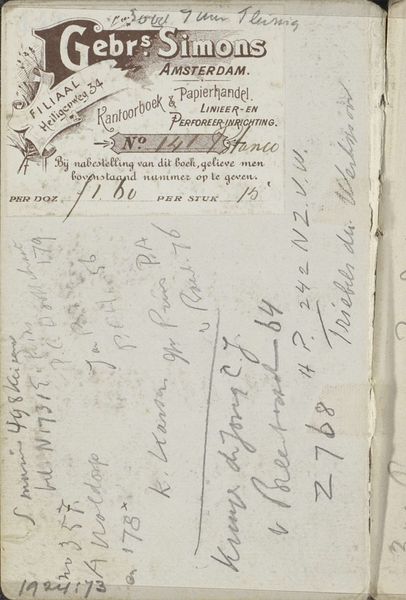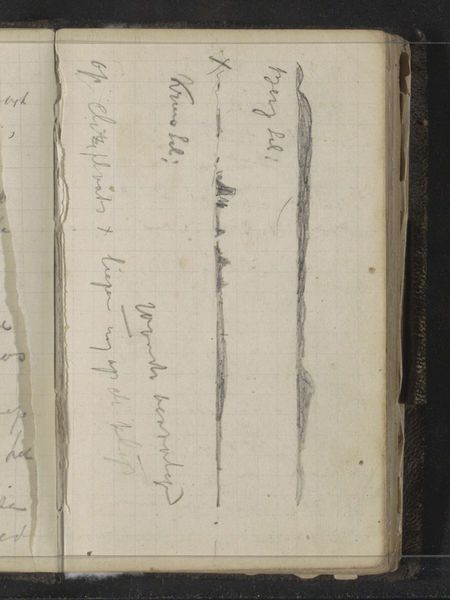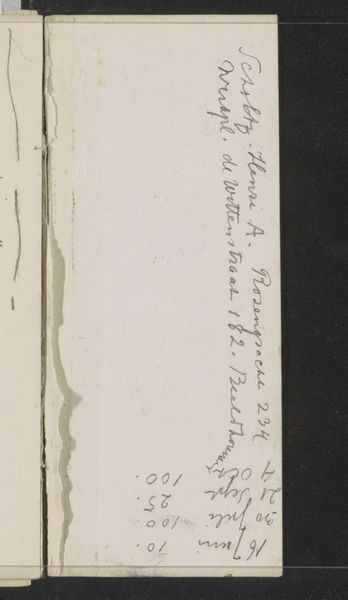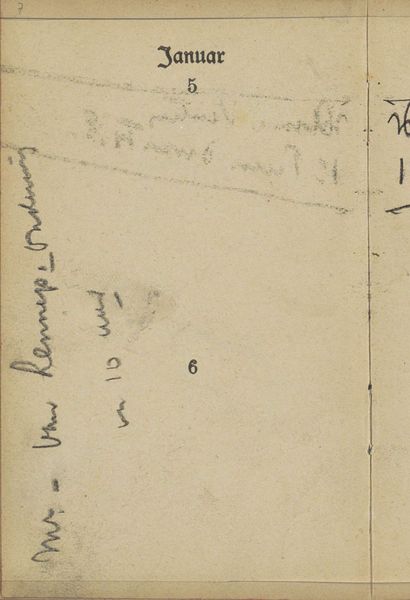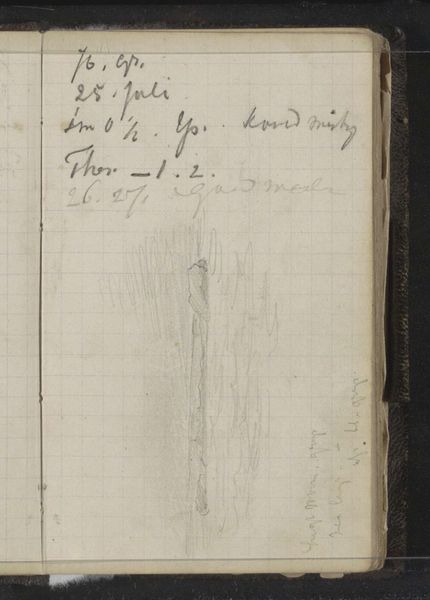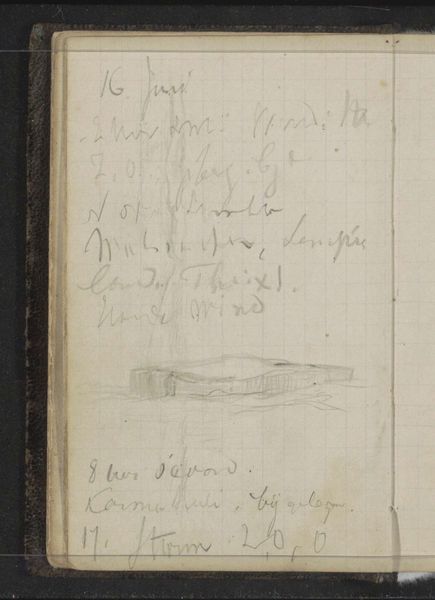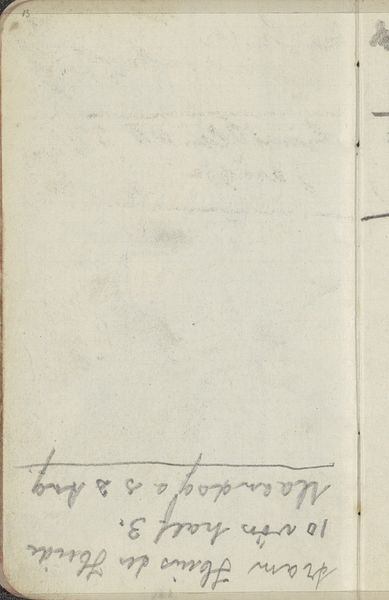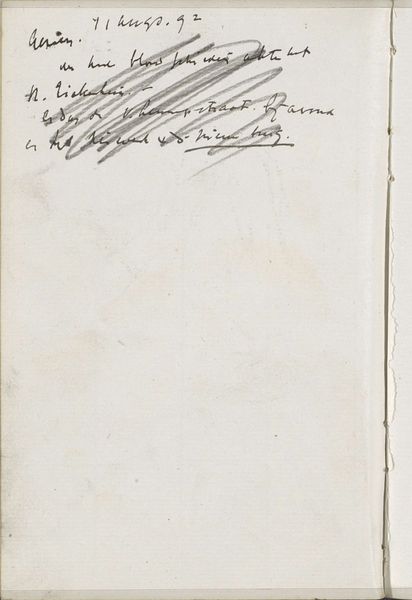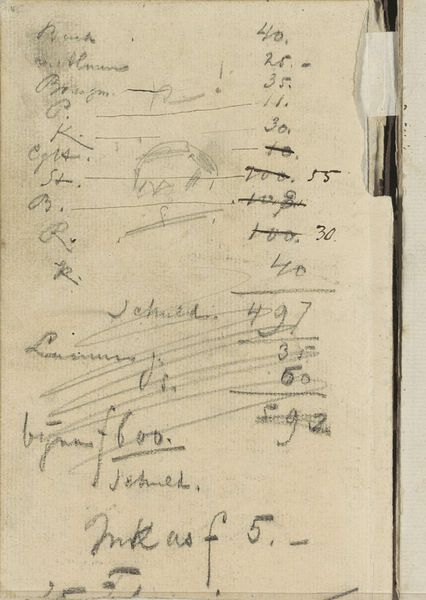
Copyright: Rijks Museum: Open Domain
Editor: Breitner’s "Annotaties," created in 1893 using pencil and watercolor on paper, presents a fascinating glimpse into the artist's working process. It feels like a page torn straight from a sketchbook, a jumble of handwritten notes alongside what looks like a quick sketch. What do you see in this piece that speaks to you? Curator: The beauty of this "Annotaties" lies in its vulnerability; it provides intimate access to Breitner's thought process. Consider the writing itself—the addresses and personal names hinting at human connections and daily life during that period. Notes as symbols represent the importance of observation, and documenting that information through text acts as a memory of a moment. The addition of the sketch shows how multiple techniques are integrated together, thus conveying a bigger meaning to the observer. What do you notice about the composition? Editor: It feels almost haphazard, like there isn't a clear focal point. The writing is scattered, and the sketch is tucked away on the side. Does this randomness reflect something about Impressionistic art, or perhaps about the artist himself? Curator: Precisely! This "randomness" challenges the traditional art norms and suggests freedom in portraying everyday life. As an Impressionist, Breitner strived to capture fleeting moments, raw emotions, and the authentic human experience. In my view, he uses notes alongside visual imageries that evoke memory, almost like reconstructing and archiving. The arrangement of word and image in the work has some interesting symbolic weight in memorializing details, wouldn’t you agree? Editor: I never thought of it that way, about the artist piecing back memory from textual and visual clues! Looking at the piece in this light has revealed more about the period, but about art making as well! Curator: Absolutely. By looking at the images of people and notes that have been long gone, and by piecing the information available about the cultural setting where the piece was made, one learns the symbolic importance it played during its period.
Comments
No comments
Be the first to comment and join the conversation on the ultimate creative platform.
